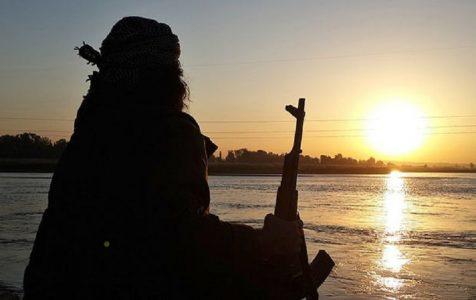
Two sisters by Asne Seierstad review – a journey to join Islamic State terrorist group
The author of The Bookseller of Kabul tells the true story of two jihadi daughters and the father who travels to Syria to try to change their minds.
Ayan is 19 and Leila only 16 when their parents receive an unexpected email from them. “Please do not be cross with us, it was sooo hard for us to leave without saying goodbye.” They are travelling to Syria to join Islamic State. They want to help Muslims, they say, “everything from fetching water for the sick to working in refugee camps”.
The names of the two sisters have been changed, but the story – related by Åsne Seierstad, author of The Bookseller of Kabul – is entirely true. The girls are Norwegian-Somalis, from a devout but tolerant family. They’ve grown up and attended good schools in Baerum, “the Norwegian municipality with the highest percentage of millionaires and the greatest divide between rich and poor”. What disturbs in the account of their childhood is not its foreignness but its comfortable ordinariness. Ayan in particular is a promising student. She develops crushes on boys and expresses indignation at women’s oppression. Then she transforms “from open and approachable to sarcastic, patronising and loud” – hardly an unusual adolescent trajectory.
Certainly the second-generation migrant experience of feeling culturally and racially out of place creates an urgent need for self-definition. The sisters join Islam Net, a youth organisation seeking to cleanse Islam of the elders’ “ethno-cultural” practices. The danger of such “purified” religion is its potential transformation into an ethnicity substitute, stridently political but stripped of its moral, and spiritual core. The sisters take to wearing niqabs and – to their parents’ horror – adopt a snooty attitude to kuffar.
But all this – religious awakening, identity politics, conspiracy theories – is still standard teenage fare. What propels the girls from humdrum self-righteousness towards bit parts in a war drama is their latching on to transglobal Salafi jihadism, a religious strain prominent on the internet and certain battle fronts. Transfixed by romantic accounts of the Muslim past and near future, Ayan gravitates towards the “Prophet’s Umma” organisation. Seierstad indicates but doesn’t overplay the sexual allure of these rugged “alpha-Islamists” with gangster pasts – characters such as Bastian Vasquez, a Chilean-Norwegian convert, embezzler of charity funds and child abuser. Through well-researched character sketches, Seierstad (who also authored a book on the trial of neo-fascist terrorist Anders Breivik) skilfully brings this dark milieu to life.
Once the girls are in Syria, the story’s focus shifts to their well-meaning father, Sadiq. Guilty only of fecklessness and inattention, now terrified for (and shamed by) his daughters, Sadiq pursues them to Turkey, then across the border. He’s taken under the wing of Osman, an arms and information smuggler. The Syrian background is sketched quickly and accurately. It’s late 2013 and democratic rebels are losing ground to Islamist and jihadist groups. President Assad, “fearing democracy more than Islamism”, is contributing to the process. By ruthless strategy – “Survey. Monitor. Abduct. Eliminate” – the “arrogant, boorish and cruel” foreigners of Isis are increasing in number.
Attempting to negotiate, Sadiq is abducted, pressured to enlist, then tortured as a spy. Syrian farmers are murdered close by. “What sort of hell is this?” one asks. Sadiq finally escapes back to Oslo. But his wife Sara, never happy in Norway, and subjected now to Somali community gossip, leaves for Somaliland, taking the younger children. Lonely and broke, Sadiq retreats into fantasy and denial. An occasional poet and musician, once a teenage militiaman, Sadiq’s dealings with fighters, smugglers, diplomats, policemen and journalists lead him increasingly out of his depth. In a series of returns to Syria – and ill-fated rescue attempts – everything that can go wrong does. Crucially, the girls reject being rescued. Sadiq can’t “admit that what he wanted was not what his daughters wanted”. What do they want? No longer “to help Muslims”. Ayan texts her brother: “We get money without working here btw. Tee hee.”
Seierstad’s literary journalism is patched together from texts and chats as well as school files and interviews. Judged by their own words, the Isis women don’t come off well. “Keep in mind that God has ordained our reward here,” Leila texts her parents. This is aptly translated as “the Islamic State’s version of: because I deserve it”. When her Syrian neighbours are evicted, one female jihadist gloats: “I’m pretty sure the men were beheaded, the women chucked out.” Another describes the beheading of aid worker Peter Kassig as “gut-wrenchingly awesome justice”. And Ayan herself comments that Yazidi women being raped are “not women, they’re spoils of war”.
What explains the appeal of such savagery? Seierstad deliberately proposes no answer, only the implied lesson, or reminder, that people may become so convinced of their own fictions that they experience vice as virtue and an inferno as paradise. French scholar Olivier Roy argues that, in the western jihadi mindset, real countries are converted into “gaming space”. This applies more generally. Syria has become a screen on which outsiders project their own concerns and dreams, from the resurrected caliphate to the war on terror. As well as invading states, individual Sunnis, Shias, fascists and leftists have arrived from around the globe. Less and less space is left for Syrians themselves.
Source: Guardian





